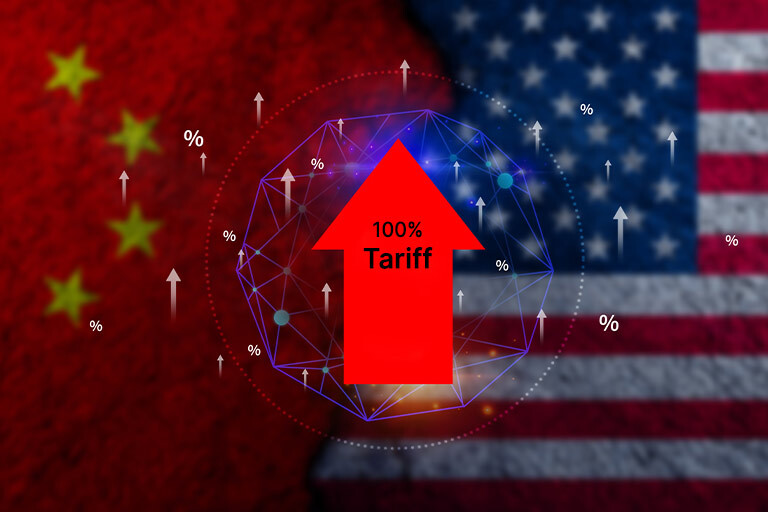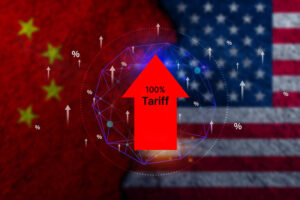Trade tensions between the United States and China have resurfaced after US President Donald Trump announced plans to impose a 100 percent tariff on Chinese imports. The move came days after Beijing introduced new restrictions on rare earth mineral exports, resources crucial to global technology and defense industries.
China Tightens Control on Rare Earth Exports
On October 9, China expanded its export controls to include 12 out of 17 rare-earth elements and certain refining equipment, effective December 1. The government described the policy as a measure to protect national security and respond to ongoing US sanctions targeting Chinese companies in logistics, shipping, and manufacturing.
Under the new rules, foreign firms must obtain official approval before exporting products containing Chinese rare earths and are required to specify their intended use. Beijing argued that the decision was prompted by Washington’s growing restrictions on Chinese entities despite ongoing trade talks.
Analysts see the timing of the move, just weeks before a likely meeting between Trump and Chinese President Xi Jinping, as a calculated attempt by China to gain leverage. Rare earth materials are indispensable for producing electric vehicles, semiconductors, smartphones, and advanced weapons, giving Beijing a strategic advantage in global supply chains.
Washington Responds with New Tariff Threat
The day after Beijing’s announcement, Trump declared that a 100 percent tariff on Chinese imports would take effect on November 1. He also indicated plans to impose additional export controls on critical software. The declaration immediately cast uncertainty over his upcoming meeting with Xi, raising fears of another trade war between the world’s two largest economies.
China’s Ministry of Commerce condemned the planned tariffs, calling them unjustified and harmful to global trade. The ministry warned that Beijing would respond firmly if the US followed through, emphasizing that China did not seek confrontation but was prepared to defend its interests.
Experts noted that both governments are increasingly merging economic and security concerns in their policies, using trade measures as tools of strategic competition. Analysts point out that China adopted a broader definition of ‘national security’ as early as 2014, encompassing economic, technological, and social domains, an approach that now resembles Washington’s own strategies.
A Long History of Economic Confrontation
The latest escalation continues a pattern of tit-for-tat economic measures dating back several years. Early in 2025, Trump imposed 10 percent tariffs on Chinese imports, later raising them to 20 percent. Beijing retaliated with duties on US agricultural goods, and both sides eventually raised tariffs beyond 100 percent before partially rolling them back.
Under the Biden administration, Washington had already intensified export controls on advanced technologies such as semiconductors, artificial intelligence, and quantum computing. These restrictions were designed to limit China’s technological progress in critical sectors.
Earlier, during Trump’s first term, the US targeted Chinese telecom giant Huawei, accusing it of posing national security risks and barring its access to US technologies. The Obama administration had also clashed with China over rare earth exports, leading to a World Trade Organization ruling against Beijing in 2014.
Uncertain Prospects Ahead
Trump and Xi are expected to meet later this month at the Asia-Pacific Economic Cooperation (APEC) summit in South Korea. However, the escalating trade dispute threatens to overshadow the talks. While Trump has attempted to downplay the confrontation publicly, both governments appear to be preparing for prolonged tension.
Economists say that both nations can withstand short-term shocks but face different challenges. The US benefits from strong domestic consumption, while China’s economy remains heavily reliant on exports. Nevertheless, Beijing’s dominance in rare earth production provides it with significant leverage, giving it influence over key industries worldwide.
Neither side appears ready to compromise. China’s export regulations allow for gradual enforcement, enabling flexibility in negotiations. Meanwhile, Washington’s tariff threats serve as both economic pressure and political messaging. For now, both countries seem intent on maintaining a firm stance, leaving global markets braced for renewed volatility as another chapter unfolds in the long-running US-China trade rivalry.













